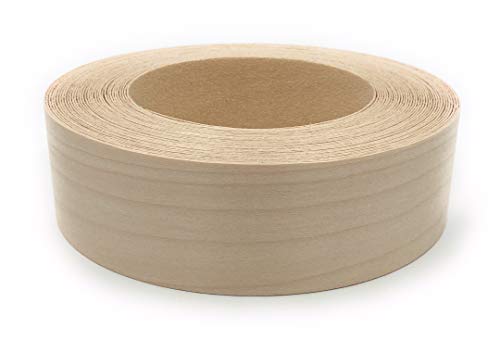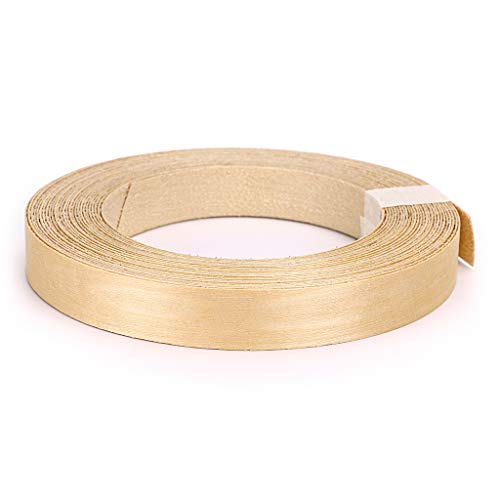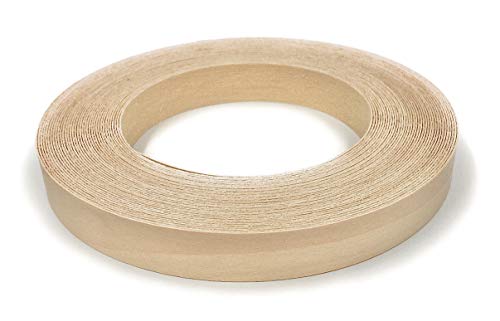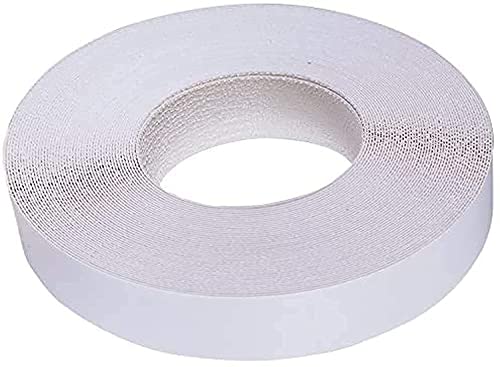Best Veneer Edge Banding to Get a Perfect Finish To Your Furniture
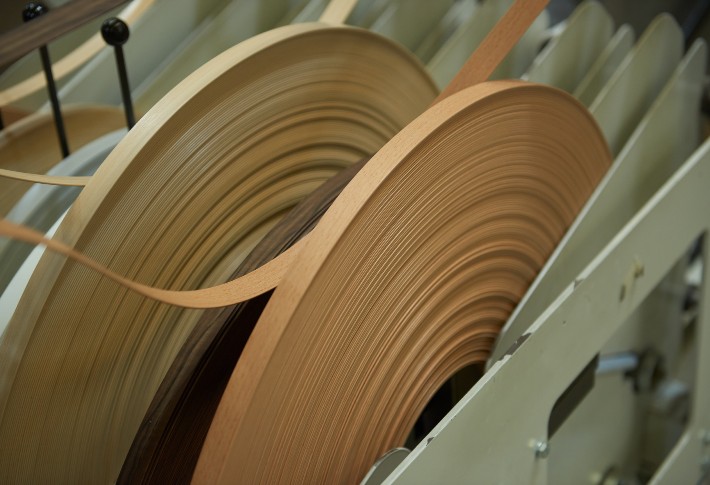
Our Top Picks
- Best Overall: Edge Supply Birch 2 In X 50 Ft Roll Shop Now ➔
- Runner Up: Skelang Wood Veneer Edge Banding Shop Now ➔
- Honorable Mention: Edge Supply Birch Edge Banding Shop Now ➔
- Contender: Edge Supply White Melamine Veneer Edge Banding Shop Now ➔
What are the Best Veneer Edge Bands in 2024?
Best Overall
First in line is the edge birch two that is pre-glued, so all won’t need any additional adhesives for it. Just press it on the required furniture with a hot iron. The roll comes in different sizes; you can either buy a 50 feet roll or a 25 feet roll. The quality of the veneer used for the edge banding is outstanding and provides a refined finish to your projects. The veneer edge banding is made to perfection because of the finely sanded finish. You can also use a trimmer to cut out the access banding and use it as required.
Pros
- Excellent quality veneer
- Finely finished with sanding
- You can use it on a variety of surfaces
Cons
- The pre-glue is not of good quality and does not stick instantly.
Key Features
The best things about edge supply birch 2 are that you can use it on various surfaces. It is compatible with wood, plywood, hardboard, metal, and particleboard. You can stain or coat it with your favorite lacquer finish. However, the German adhesive used for the pre-glue is disappointing. The glue lacks quality and gives a tough time in the application of edge banding.
Runner Up
It is a pre-glued edge banding made of birch wood (Asian Wood). As mentioned above, Asian wood is highly flexible and provides a smooth cut surface. There are not many size options available in this edge banding as it only comes in size: 3/4” × 50′ (19mm × 15m) in width by length. It is pre-glued, which makes its application easy. The glue is strongly adhesive, and it just takes one press of hot iron or a hot blower to make the veneer stick to the object. After gluing it to the thing, you can sand or trim the edge banding as required. It is easy to cut and won’t need any fancy ingredients.
Pros
- Strongly adhesive pre-glue that makes it easy to use
- Highly flexible and durable
- Easy to trim and sand
Cons
- Not many size options
- Seams in the roll after continuous intervals
Key Features
The edge banding is excellent for preventing your furniture from getting damaged from moisture. Likewise, it enhances the life of your furniture by providing it durability. The edge banding can be used for different types of furniture like doors, cabinets, tables, shelves, and desks. If you enjoy creativity, then your Skelang edge banding is also perfect for your DIY woodcraft. However, like all products, it also has one flaw in its bucket. There is a seam in the roll after approximately every 4-5 inches, making it challenging to apply the edge banding in continuity.
Honorable Mention
We did a comprehensive analysis of edge supply birch (2 inches) above. Now let’s take a look at the edge supply of birch in the size 3/4″ with a 50-foot roll. The flaw of weak pre-glue has been overcome in this size. The German pre-glue used in this edge supply birch is of better quality and gives better results. The edge banding sticks to the object instantly with a bit of iron press or with the heat of a blow dryer. You can also use an edge banding machine (if you have the tools). Apart from overcoming the flaws of 2-inch edge supply birch, 3/4 inch has also maintained the previous pros.
Pros
- High-quality veneer
- Easy and quick application
- Easy to trim and sand
Cons
- It is too thin, causing bubbling after application
Key Features
The quality of the veneer is up to the standards and provides excellent quality. Thus, you can comfortably use it for enhancing or repairing your furniture. It is finely sanded to add a smooth finish to the edge banding. You can also trim the edge banding to fit your required size, and if needed, you can lightly sand it. The best part of this edge banding is that you can use it on several surfaces. This edge banding covers all your needs from wood to plywood, from particle board to rigid board. The only drawback in using this edge banding is that it is too thin, which causes it to bubble after application.
Contender
Last in line is a beautiful white melamine edge banding of 3/4 inch x 25 feet roll. The veneer used for making the edge banding is of high quality and strength. Like all the other edge bandings listed above, you can also use this for various projects like repairing the furniture, smoothing the edges, and improving the appearance of your furniture. It is also compatible with different surfaces like wood, plywood, metal, and hardboard.
Pros
- High-quality veneer
- You can use it for various projects
- Compatible with various surfaces
Cons
- Low-quality glue leads to complex application
Key Features
The edge banding is flexible so that you can use it for both flat and cylindrical objects. Now coming to the flaw, the application process becomes a little complicated due to the low quality of adhesive glue. The edge banding does not stick on the surface with a single iron press and starts to peel. You sometimes need to use special wood glue to use this edge banding.
Buyer's Guide to Finding the Best Veneer Edge Band
Those who have prior experience in buying veneer edge banding will know how strenuous this job can be. Choosing the right edge banding will save you from future maintenance issues. If you buy a poor-quality veneer edge banding, it can result in peeling problems.
Why Do You Need To Buy Veneer Edge Bandings?
Solid wood furniture has been in the market for a long time, but it is hard to find ‘genuine’ solid wood. Genuine solid wood furniture is costly and rare to find. Thus, this is where veneer edge bandings and veneered panels come into play. Take a look at the three main reasons for having veneer edge banding:
Appearance
We don’t just want furniture that serves its purpose; appearance also matters. A table standing erect in your living room is not all that you need. It also requires a perfect appearance to bring out the grace of your living room. Veneer edge bandings provide these final touches of perfection to the appearance of your furniture with veneered panels. And, veneer bands can be simply cut with a sharp utility knife to get the perfect fit.
Durability
Furniture should be long-lasting and durable. Thus, to add to the durability of your furniture, you need to have veneer edge bandings. They protect your furniture from stains, water splashes, and other unfortunate events.
Strength
Durability comes with strength, and veneer edge bandings provide additional power to your furniture. The one extra layer on your table will do wonders for the lifecycle of your furniture. Though the banding can be intentionally cut with a utility knife, it is durable and will not split or crack.
Which Type of Veneer Edge Banding Should You Buy?
Edge bandings are classified into PVC, solid wood, and veneer. A veneer is then further classified into four major types: natural veneer edge banding, recon veneer edge banding, UV pre-finished edge banding, and rare veneer edge banding.
Natural veneer edge banding
It is a roll for sealing the edges of the plywood, particleboard, MDF, or wood board. As the name suggests, this veneer edge banding is made from natural veneer wood. Commonly, it is the first choice of everyone who wants to buy a veneer edge banding for veneered panels. They have varying thicknesses and are flexible to use.
Recon veneer edge banding
It is made from reconstituted veneer sheets and is at least 2.5 meters long. People mostly opt for this type because of the consistency of colors and grains in every sheet. These recon edge bandings are also famous for their low cost.
UV prefinished edge banding
These are finger joined wood veneer coils with a clear or stain UV lacquer coating finish. Thus, it provides durability and excellent surface characteristics. You can also get custom stain coating to get the exact colors and designs.
Rare veneer banding
It is an unusual type of edge banding that is used in special woodwork projects. Burl edge banding, cross-grain edge banding, and end grain edge banding; all are a part of this category.
What Are Some Different Wood Species?
Several different types of wood species are available in the market; each has distinct qualities and features. You should know which wood species you want for your furniture. The standard wood species that are available in veneer edge banding fall into four different categories:
American wood species
It includes white oak, walnut, cherry, red oak, maple, rosewood, pine, and many more. This species is known for its sustainability and quality. The edge bandings made from American wood species are considered to be more durable than others.
African wood species
It includes Bubinga, Zebrano, Sapeli, Anigre, Teak, Wenge, Okoume, Mahogany, Ayous, and many more. The veneer edge bandings made from African wood species are known for their design colors. Furthermore, these are also considered to be sustainable.
European wood species
It includes ash, oak, beech, and Figured sycamore. The advantage of using veneer edge banding made from European wood species is that it will be light and have excellent strength.
Asian wood species
It includes Bamboo, Chinese ash, Birch, oak, Basswood, Teak, Ebony, and Eucalyptus. The veneer edge bandings made from Asian wood species have primarily low cost and are flexible.
Installing Veneer Edge Banding
Once you get your new veneer edge banding, you’ll want to apply it to your furniture. To learn how, watch this tutorial from Bent’s Woodworking & More:

People Also Asked
What should be the thickness of veneer edge banding?
The thickness of veneer is the primary driving force that determines its price. The thickness of veneer edge banding can be as low as 0.1mm and as high as 3mm. It is usually recommended that if you need edge banding for areas like the bathroom and kitchen then, the thickness should be around 1mm. Similarly, for commercial use, the recommendations are to use 3mm to provide more strength.
How hot should the iron be for applying edge banding?
The temperature of iron is critical to ensure a proper application of the edge banding. The glue of edge banding melts and sticks to the object at 390 F.
How to trim veneer edge banding?
How to remove old edge banding?
The simplest way to remove an old edge banding is by doing it with a putty knife. The edge banding will come off quickly but do clean the surface before applying the new edge banding. You can lightly sand the surface or use rubbing alcohol to remove the glue marks.
Can you paint an edge banding?
Yes, you can paint an edge banding. Just make sure that the edge banding you are working with is sand-able.
Article Contributors
The Woodsmith Review Team’s product reviews and in-depth guides are here to help you choose the best tools and gear to build great-looking projects confidently. Woodsmith is reader-supported: When you buy through links on our site, we may earn an affiliate commission. Large language models (like Artificial Intelligence) may have been used in the research and creation of the content.
Inquiries regarding specific articles or product testing should be sent to aimperiapt@gmail.com

